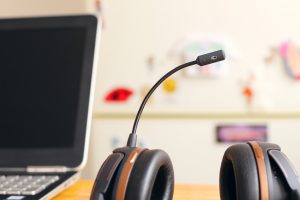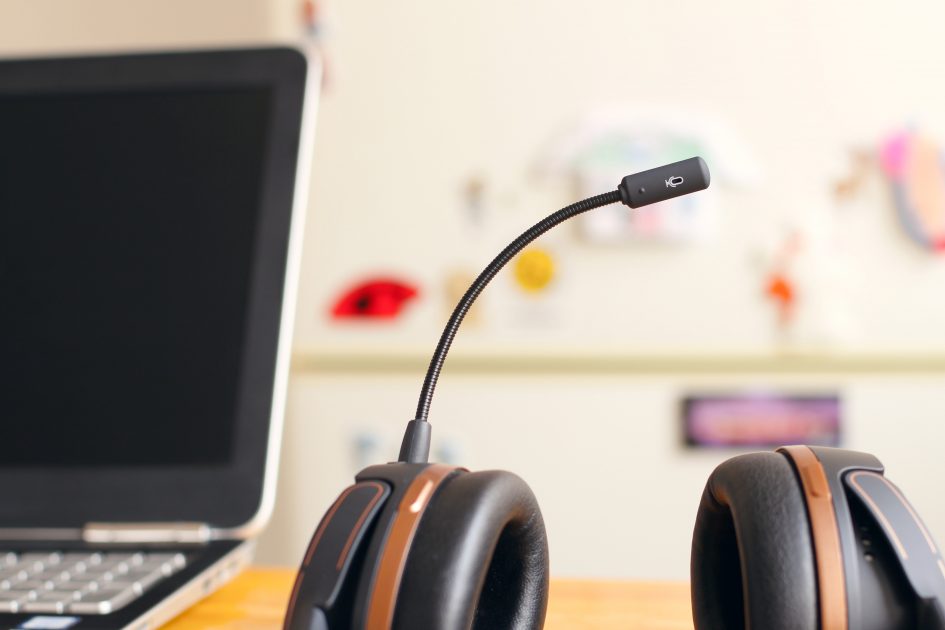Living and working in a rural setting, one of our challenges is access to support and services for our students. One of our challenges is the geographic make-up of our school district. The Gulf Islands school district consists of 5 islands, therefore travel between the island for support services or specialists can be extremely challenging. For example, in order to visit one of our schools, you may be in transit for up to 5 hours for a 30 minute face-to-face session with a student. This is not a practical or efficient use of a specialist’s time, or district resources. However, this then leads to inequity in support services for students that live more remotely.
This has been the case with our Speech and Language support. In the past, our district had an SLP (speech and language pathologist) that primarily served our largest island and we contracted out an additional SLP that serviced our 4 smaller islands (this SLP lived on one of these smaller islands). However, partway through last year we lost our additional SLP (they moved away) and the district began searching for alternatives to support our students. For the reason mentioned previously, it was not feasible for our remaining SLP to travel out to work with our students, so last year we piloted a computer assisted instruction therapy service called TinyEye.

Photo by Petr Macháček on Unsplash
This week, I searched for research relating to computer assisted instruction for speech and language support, to determine the effectiveness for this type of service in comparison to face-to-face service, in hopes that it will be a feasible and efficient form of therapy for our students.
In Australia, researchers conducted a study to examine the effectiveness of a speech and language teletherapy program using video conferencing to support speech and language skills for pre-school and primary-aged children (Fairweather, Lincoln, & Ramsden, 2016). In their study, Fairweather, Lincoln, and Ramsden found that children made similar gains through teletherapy sessions as would be expected from face-to-face sessions (2016). Of the children that participated in the study, 73.68% achieved expected, or above-expected, achievement in the goals set-out through consultation between the SLP, teacher, family, and the student. Of the children that did not meet expected outcomes, absence from sessions or a lack of participation were cited as factors in their achievement (Fairweather, Lincoln, & Ramsden, 2016). The context described by Fair-weather, Lincoln, and Ramsden (2016) is also similar to my current context, in that distance to travel for an SLP is a major barrier in service delivery. Therefore, in addition to measurable success in from therapy sessions, families also stated that the practicality and convenience provided by the teletherapy sessions was substantial because it reduced the expense (e.g. fuel, taking time off work) and time (e.g. travelling to an SLP) required to travel to an SLP (Fairweather, Lincoln, & Ramsden, 2016).
In comparison to the type of effective teletherapy outlined by Fairweather, Lincoln, and Ramsden (2016), our current teletherapy provided by TinyEYE seems to consist of many similar beneficial aspects. We have consultation time with the SLP to set goals for our students, our eHelper (adult assistant that sits with the children during their therapy sessions) does additional practice in between sessions that connect to the focus on the therapy that week, and our sessions have a parent/home participation component. Therefore, according to this research it seems that our speech and language teletherapy may be a practical and beneficial replacement for face-to-face therapy sessions.
Finally, this particular research by Fairweather, Lincoln, and Ramsden (2016) focused on the perspective of parents and families and moving forwards, I am interested in finding research that reports on the findings from the perspective of the educator and/or clinicians. As well, I’m curious to see if there are supportive apps that may also facilitate speech and language skill development in addition to therapy.
References:
Fairweather, G. C., Lincoln, M. A., & Ramsden, R. (2016). Speech-language pathology teletherapy in rural and remote educational settings: Decreasing service inequities.International Journal of Speech-Language Pathology, 18(6), 592-602.

October 16, 2019 at 9:48 am
Hey megc! Thanks for your article regarding the success of teletherapy. Like I mentioned before, our school also used TinyEYE for many of the same reasons as you. In my location there are too many people receiving SLP services compared to the amount of SLPs available. I wonder how it works with your primary aged students? We don’t use TinyEYE until the student is in grade 2. K and grade 1 students are assessed by an SLP and given games and activities to do with a trained EA (probably similar to you eHelper). The younger students work with these activities until the EA feels they have mastered them and are used in everyday speech opportunities, then the SLP is contacted and new activities are provided. This helps with parent costs as well.
I’m curious about how many parents are engaged in the home participatory section of TinyEYE in your district. We don’t have many students who work on it at home, unfortunately.
October 17, 2019 at 11:22 pm
Hi mrsandersenwestcoastclassroom,
Thanks for you question! Currently I only have 3 students (2 families) that are receiving SLP support (through TinyEYE – no face-to-face SLP). I have just recently given them access to their “backpack” (which houses the games for practice). So it will be interesting to see over time how often they use this additional practice. TinyEYE is very new to our district – I piloted the program last year with only 2 sessions in late-May/early-June, but this year we have 4 school sites that will be using this service. I’m also interested to see how many families overall engage with the backpack… I’m hopeful, but it’s also a reality that many of our families don’t have access to technology and/or are not particularly comfortable with it themselves… which could decrease the possibility of their children engaging with the support at home. But definitely something I will ask the program coordinators from TinyEYE when we do our review. Thanks again!
October 18, 2019 at 3:10 pm
Thanks for sharing Megan! Tiny Eye seems like a great program for more rural settings. Wow, 5.5 hours to get to one of the islands, that is a big chunk of time! Through the research article you summarized, it was great to hear the stats about how children are benefiting from the program (just as well or if not better than having face to face time with an SLP). I am excited to read more on this topic through your posts!
October 28, 2019 at 5:06 pm
Megan your topic is so interesting! I can’t believe how much travel time to get to the island actually takes. I would like to know more about TinyEYE ! If families are stating that the practicality and convenience provided by the tele-therapy sessions are in fact substantial than it really does not make much of a difference having someone face to face. I am looking forward to reading more of your posts! Thanks for sharing!